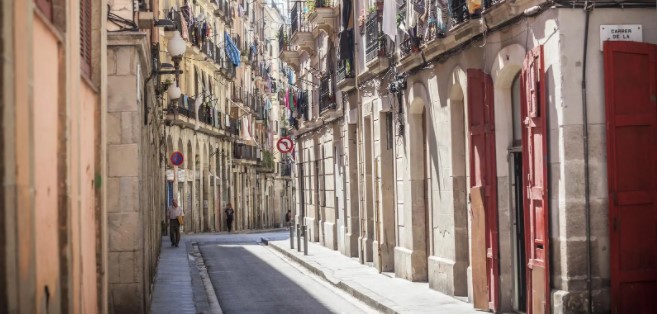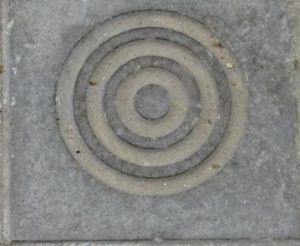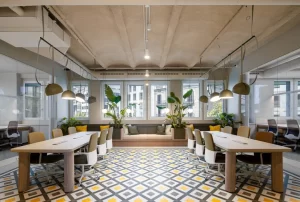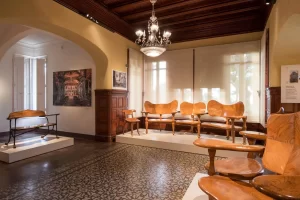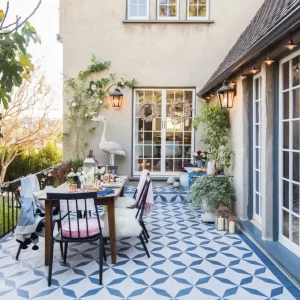The panots are the type of cement tile which is used in the Barcelona pavements. Their history is fascinating because they have unwittingly become one of the emblems of Barcelona.
When are panots introduced?
The panots are closely related to the urban development of Barcelona's Eixample district. Traditionally, stone was used for paving in the city. macadam. The problem was that, when it rained, it became a muddy surface by its very nature. In fact, it came to be called Can Fanga to the city. As of 1903, The need for the use of other types of paving for Barcelona. It would not be possible to understand its extension without the existence of the modernist architecture and such material.
From then on, the Barcelona City Council convened a public tender. Thus, a decision was taken to finish paving the city. The choice of the panots was the one chosen from among the 5 that existed. The reason The main reason for the authorities' decision to opt for this material was primarily to economic. It was the cheapest option of those that existed and in 1907 began to be introduced in the city's pavement. But what types are there? Let us explain it better.
Types of panots
The panot has to comply with certain standard measurements of a square 20×20 centimetres. Another equally important aspect is that it has to be manufactured with Portland cement. The lack of companies manufacturing them was one of the initial difficulties for the spread of this type of tile. The main difference tends to be, rather, in the design that is printed, which can change. In any case, it is important to say that you can find them in almost any area of the city.
These are the most common designs, although nowadays only the pink and that of tablets. We are not going to talk about other varieties such as the hexagonal Guadí or the traditional cobblestone ones that have been put in the Gothic Quarter. At present, these are the most important:
1. Rose panot
Traditionally, the design has been attributed to the famous architect Josep Puig i Cadafalch. This is because the panots de la Casa Ametller are similar to this design. However, there are some differences in relief and, most importantly, no documentary evidence. Today this is a very common design in the streets of Barcelona.

2. Tablet panot
The panot of tablets has two great virtues. Firstly, it can be building in small pieces without making a noticeable difference. Secondly, it facilitates water drainage, The use of the new system is one of the most important aspects to avoid problems.

3. Four-tablet panot with circles
This design is intended to combining functionality of the tablet panot with the appeal of the rose panot. Although it is not the most common, it is not too difficult to spot on the streets of Barcelona.
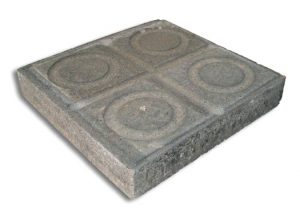
4. Panot de ensaimada
The panot de ensaimada, so called because of its concentric shape which is reminiscent of the Mallorcan bun, is rare. In any case, it is important to say that today they are no longer installed on the pavement of the city.
5. Skull panot
The skull panot is another of the designs that have been abandoned and are no longer being restored. While it might appear to be dark, Most Barcelonians got used to it in the end.
Who installs this type of tiles?
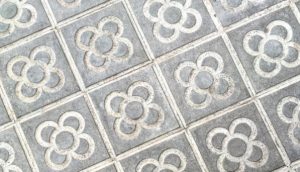
The installation of this type of tiles is assigned to specialised manufacturers. It must be said that these are few, because Barcelona City Council only works with companies with experience in the sector. This is the case of Mosaics Torra, which provides tiles, panots y Gaudí tiles. No less important is the work of restoration, which is fundamental for Barcelona's paving.
If you want to buy cement tiles, Mosaics Torra is an interesting option for several reasons. Firstly, because we are manufacturers. On the other hand, because we take care of the installation. Finally, because we can restoring public buildings because we have the know how.

